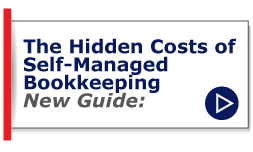
Cash flow forecasting can make or break your business. Business owners need to know how much cash they have on hand for essential business expenses, whether to lean on your lines of credit, and whether they can purchase the inventory needed for the business. Slow seasons make accurate cash flow forecasting difficult, especially if the business is particularly seasonal in nature. However, whether your business sells products or provides services, there are a few best practices to lean on to help ensure accurate cash flow forecasting year round.
1. Look at historical trends within your company.
You have a plethora of data, so use it. You might not have exact numbers if you've experienced fast growth, but you can compare your historical trends to figure out approximate cash flow during slower seasons of the year. This method works best if you have an extended period of data to work with, such as the past five years or so. For startups and early stage businesses, lean on industry data to help project seasonal ups and downs. If you have an industry mentor or professional group, reach out for help finding and digesting the data. You may want to invest in market research from similar companies to get additional data points if industry data is limited or difficult to ascertain.
2. Pay attention to external data.
Your sales and industry data doesn't exist in a vacuum. Keep a finger on the pulse of what is happening in the economy and in government to make sure new regulations, market shifts and current events are signaling a major shift in your business. If your sales data relies on the availability of certain raw materials and a record drought has reduced supply significantly, your historical data may not be your most telling information.
3. Remain conservative in your approach, even if your projections look good.
Cash flow forecasting isn't an exact science, and it's important to not get too optimistic about how much cash flow you have coming in. Caution helps you avoid hitting periods where you have no cash flow and the resulting shortage equals late vendor payments, reliance on lines of credit and more severe problems. Industry projections may call one of your slow seasons a fast-paced period, but unforeseen circumstances can hurt sales and skew your projections. Protect yourself and your business by taking a middle of the road approach with your cash flow forecasting.














